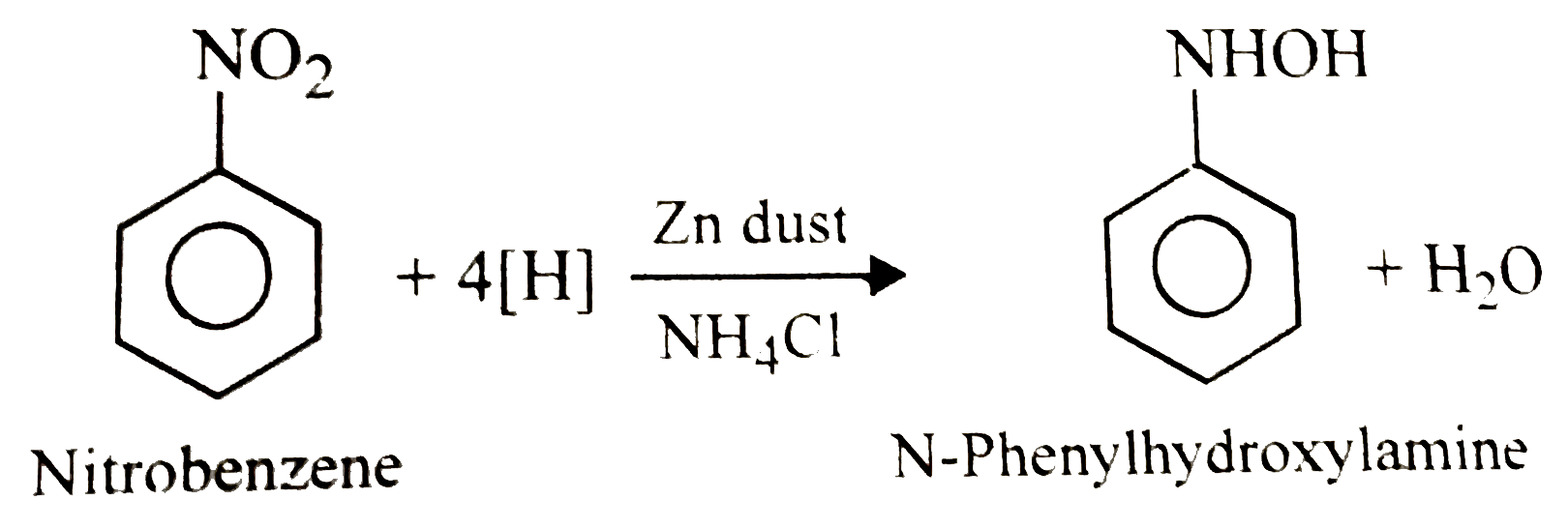Reduction of nitrobenzene with zinc dust and aqueous ammonium chloride yields
A
benzenamine
B
aniline
C
N-phenylhydroxylamine
D
none of above
Video Solution
Text Solution
The correct Answer is:C
|
Topper's Solved these Questions
- CYANIDES, ISOCYANIDES, NITROCOMPOUNDS AND AMINESBOOK - DINESH PUBLICATIONCHAPTER - CYANIDES, ISOCYANIDES, NITROCOMPOUNDS AND AMINESEXERCISE - REVISION QUESTION
186 Videos
- CYANIDES, ISOCYANIDES, NITROCOMPOUNDS AND AMINESBOOK - DINESH PUBLICATIONCHAPTER - CYANIDES, ISOCYANIDES, NITROCOMPOUNDS AND AMINESEXERCISE - Selected Straight Objective Type MCQs
50 Videos
- CO-ORDINATION COMPOUNDS BOOK - DINESH PUBLICATIONCHAPTER - CO-ORDINATION COMPOUNDS EXERCISE - Brain storming multiple choice question
12 Videos
- D-AND -F BLOCK ELEMENTSBOOK - DINESH PUBLICATIONCHAPTER - D-AND -F BLOCK ELEMENTSEXERCISE - BRAIN STORMING MULTIPLE CHOICE QUESTIONS (MCQS)
13 Videos
Similar Questions
Knowledge Check
Nitrobezene of treatment with zinc dust and aqucous ammonium chloride gives
AC6H5N=N−C6H5BC6H5NH2CC6H5NODC6H5NHOHReduction of nitrobenzene with tin-HCl gives
AanilineBazoxybenzeneCphenylhydroxylamineDazobenzeneNitroethane on reduction with zinc dust and ammoniun chloride gives:
AethanamineBN-ethyl hydroxyl amineCethyl nitriteDnitroso ethane
Reduction of nitrobenzene with LiAlH4 is ether yields
View SolutionThe bonding in ammonium chloride
View SolutionAmmonium chloride is a salt of
View SolutionAmmonium chloride in dry cell is
View SolutionNitrobenzene is subjected to reduction with zinc dust and ammonium chloride. The main product formed will be:
View Solution

